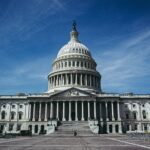The Polarized Supreme Court
For those who tuned into the confirmation hearings for President Biden’s nominee to the Supreme Court, Judge Ketanji Brown Jackson, the obvious partisanship and high tension might have been surprising. However, this is nothing new – in recent years, the Supreme Court has become another battleground for the polarization and culture wars already taking over the other two branches of government.
The judicial branch has always attempted to be the apolitical, independent branch, as described in Federalist 78; this is one of the reasons Supreme Court justices have life tenure. However, the sharp increase in partisan conflict during Supreme Court confirmation hearings demonstrates the perceived growing political importance of the Court. For example, 26% of voters for Donald Trump in 2016 cited the potential of Supreme Court nominees as the most important factor contributing to their vote decision. Trump’s promise to fill the Court with conservative, pro-life justices was one of his prime selling points to his voting bloc.
In addition, sitting justices have made surprising political judgements off the bench, such as when the late Justice Ruth Bader Ginsburg commented on the potential of a Trump presidency prior to his election in an interview, saying, “I can’t imagine what this place would be — I can’t imagine what the country would be — with Donald Trump as our president. For the country, it could be four years. For the court, it could be — I don’t even want to contemplate that.”
The last several Supreme Court hearings have been fraught with tension, political stakes, and posturing. Since the 2016 election, if not before (see Clarence Thomas in 1991), the nomination and confirmation of justices has become a political battleground. After Justice Antonin Scalia died unexpectedly months before the 2016 election, the Republican-controlled Senate refused to hold a hearing for President Obama’s potential nominee, Merrick Garland. Instead, after Trump’s election, they confirmed his first nominee, Neil Gorsuch.
In 2018, Justice Anthony Kennedy retired, and Trump nominated Brett Kavanaugh to replace him; ironically, Kavanaugh had praised Merrick Garland when he was nominated years earlier, saying he was “supremely qualified by the objective characteristics of experience, temperament, writing ability, scholarly ability for the Supreme Court.” However, Kavanaugh faced multiple accusations of sexual assault, surfacing as his initial hearing before Congress drew to a close.
The seemingly most credible accuser, Dr. Christine Blasey Ford, had a compelling testimony, but was unable to recall key details about the night Kavanaugh allegedly attacked her. Kavanaugh passionately defended himself from the accusations leveled against him, predicting ominous outcomes for the Court:
“This whole two-week effort has been a calculated and orchestrated political hit, fueled with apparent pent-up anger about President Trump and the 2016 election, fear that has been unfairly stoked about my judicial record, revenge on behalf of the Clintons and millions of dollars in money from outside left-wing opposition groups. This is a circus. The consequences will extend long past my nomination. The consequences will be with us for decades. This grotesque and coordinated character assassination will dissuade confident and good people of all political persuasions from serving our country. And as we all know in the United States political system of the early 2000s, what goes around comes around.”
Of course, Kavanaugh was confirmed on a party line vote—50-48.
In 2020, Justice Ruth Bader Ginsburg passed away at the age of 87, giving Trump the unexpected opportunity to nominate and confirm a third justice to the Supreme Court, just months before he lost the 2020 election. His nominee, Amy Coney Barrett, was a Catholic woman and mother of seven.
During her confirmation hearing, protestors dressed in red robes and white bonnets in a reference to Margaret Artwood’s The Handmaid’s Tale, in which women have limited rights and some are forced to bear children. Liberals feared that the expansion of the conservative majority in the Court would lead to an overturning of Roe v. Wade, effectively ending easy-access abortion in the United States. Multiple senators questioned Barrett on her Catholic faith, and Senator Dianne Feinstein told Barrett, “The dogma lives loudly within you.” When Barrett was confirmed, she did not receive a single Democrat vote.
So, viewers should not be surprised or scandalized when Republicans accuse Judge Jackson of being soft on child porn offenders, or ask her seemingly pointless questions like “what is a woman?” While this is not how the Supreme Court has always interacted with Congress, it is part of a trend towards polarization and partisanship growing in all three branches of government, and unfortunately it could be the norm for the foreseeable future.




